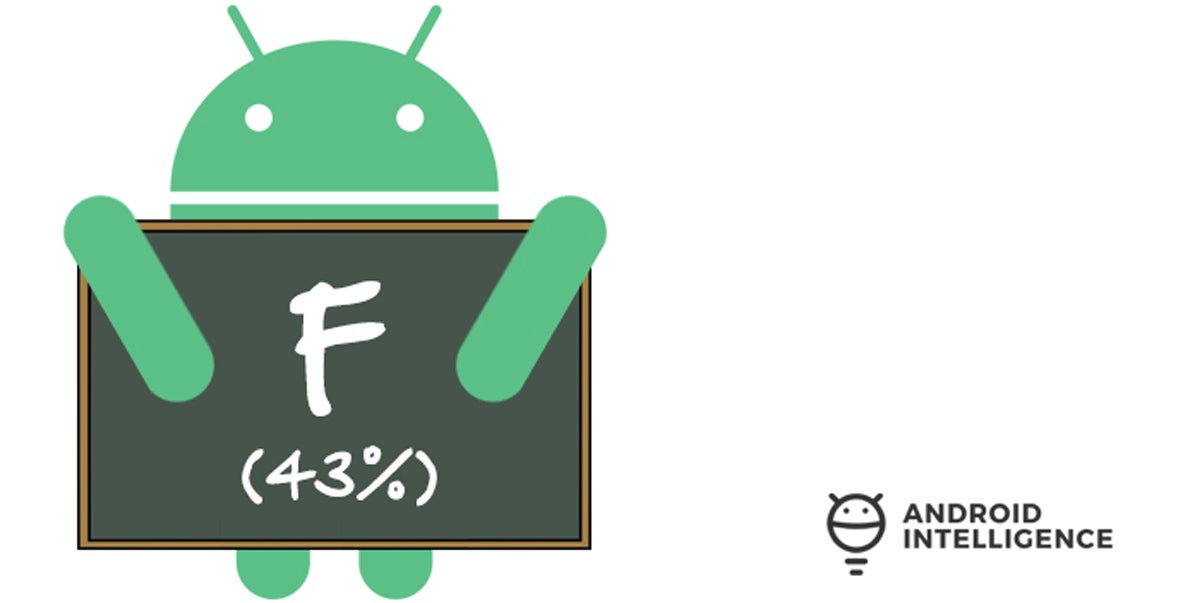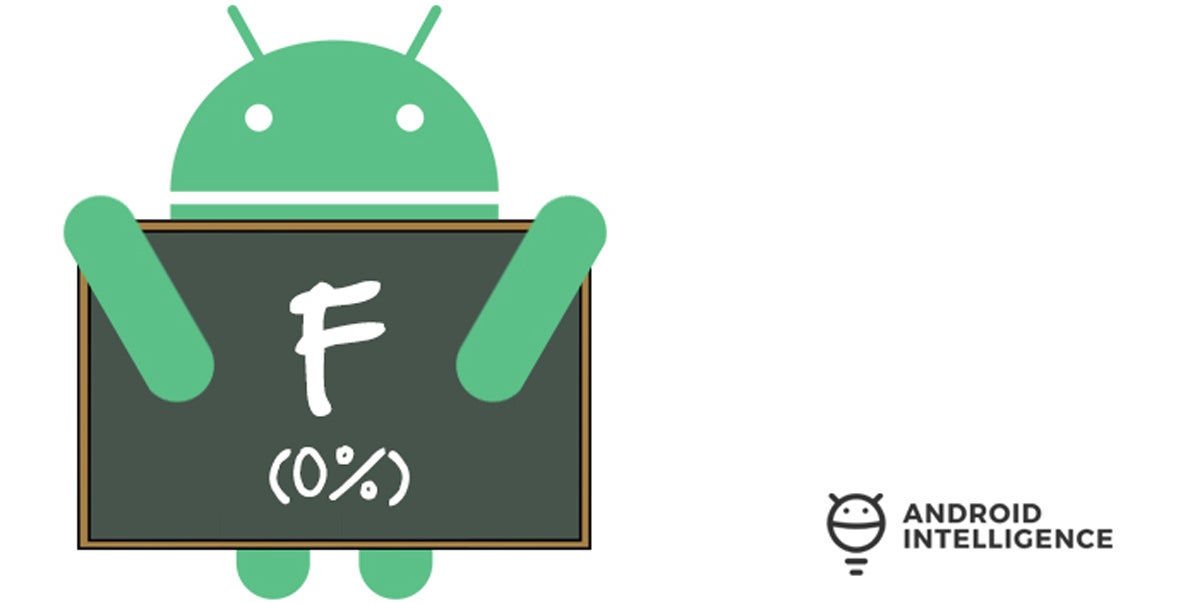LG
 JR Raphael/Google
JR Raphael/Google - Length of time for upgrade to reach current flagship: 129 days (43/60 points)
- Length of time for upgrade to reach previous-gen flagship: Still waiting (0/30 points)
- Communication: Poor (0/10 points)
LG, like Samsung, did actually do a bit better than usual this year — which is really saying something for LG, whose lack of care about even remotely timely upgrades has become a bit of a punchline. (It doesn't help that the company likes to boast about its groundbreaking innovations in Android upgrade management and then still deliver laughably bad performances.)
To its credit, though, LG got Android 10 into the hands of its U.S. G8 owners in mid-January of this year — more than four months after the software's release, mind you, but still more than the company has managed to do in any other recent upgrade cycle.
That's where the (relatively) positive news ends, however: LG dropped the ball entirely with its previous-gen G7 flagship, which has thus far received — hang on, lemme double-check my math on this — precisely jack-squat. And, as usual, the company has failed to communicate in any way with its customers and let them know what's going on or when they might expect to see something — anything! — in the way of an update.
(It's getting a little confusing to keep all of LG's mostly indistinguishable phones straight, by the way, but for the purpose of this year's analysis, I'm continuing to treat its primary G-line of devices as its core flagship product. And believe me, factoring the V-line into the equation would have only made things worse.)
I'll repeat my now-annual assessment of the situation: If you buy a phone from LG, you're accepting the fact that you'll be waiting in the dark — likely for a very long time — to see if or when you'll ever get any future updates. You'd better make sure you're okay with that black hole before shelling out your hard-earned shekels.
HTC
 JR Raphael/Google
JR Raphael/Google - Length of time for upgrade to reach current flagship: Still waiting (0/60 points)
- Length of time for upgrade to reach previous-gen flagship: Still waiting (0/30 points)
- Communication: Poor (0/10 points)
It's hard to know what to consider HTC's flagships of the moment, but the U12 and U11 are about the closest devices it's got — and, well, the scoring on those fronts is sadly easy to do: HTC hasn't accomplished a single thing in these first six months since Android 10's release. No rollouts, no updates, no real announcements to speak of.
The company's once-exemplary "Software Updates" page — where HTC used to post detailed information about the update status for every model and variant in its catalog — has finally been taken offline entirely after existing as an eerily abandoned ghost site for a number of years.
A while back, I wrote that it was tough not to think HTC would become the next Motorola of Android — the company that, for some time, did everything right from a customer-centric perspective and was the Android device-maker to watch. That same title, unfortunately, also implies that it never managed to turn that critical acclaim into any measurable commercial success and ultimately was reduced down into a shell of its former self.
Well, here we are. Sigh.
Motorola (Lenovo)
 JR Raphael/Google
JR Raphael/Google - Length of time for upgrade to reach current flagship: Still waiting (0/60 points)
- Length of time for upgrade to reach previous-gen flagship: Still waiting (0/30 points)
- Communication: Poor (0/10 points)
Speaking of a shameful fall from grace, Motorola — which was once, way back when, a shining high point on these reports — has yet to do much of anything when it comes to Android 10 and its top-of-the-line U.S. phones.
Like HTC, it's somewhat tough to say which devices exactly are Motorola flagships at the moment, but the Z4 and Z3 are the closest things it's got. And while the company has, curiously enough, rolled out updates to a couple of random lower-end devices available only outside of the U.S., it's left its high-paying customers in the States in the dark for six months and counting.
Factor in Moto's maddening move to cut devices down to a single year of support in some instances — clashing with the long-held platform-wide standard of a two-year minimum window of OS updates for top-tier Android products — and it's impossible to see Motorola's Android 10 efforts as anything more than an outright failure.
Sony, Essential, and Nokia: A few quick footnotes
This report card focuses on the companies most relevant to the U.S. flagship market, as explained in the methodology section below, but I wanted to quickly call out a few other notable Android players.
Sony, which has unfortunately become increasingly irrelevant in the U.S. market over time, managed to get Android 10 onto its Xperia 1 and 5 flagships in early December — just over three months after the software's release — and then onto a host of other devices about a month after that. Its communication efforts are consistently better than most, too. It certainly wouldn't be topping the list, if it were included in this analysis, but it'd be a much-needed extra addition to the middle-of-the-pack section and something to better take us from OnePlus's B ranking to Samsung's third-place (!) D score.
Essential, meanwhile, may be no more — and heck, the company hadn't even released a phone since 2017! — but it absolutely killed it with update speed on its sole Essential Phone, which received Android 10 on the day of its release. If Essential had ever managed to get its act together and become a serious player in the U.S. mobile market, it sure would have been a force to be reckoned with in this domain.
Last but not least is Nokia. The company has an extremely limited presence in the U.S. (and now seems to be facing an uncertain future as well), but it's consistently done a solid job of keeping its phones updated with both major and minor OS releases and with monthly security patches, a mere few years into its life as an Android manufacturer.
Interestingly, Nokia now makes all of its phones part of Android One — which means they're all actually guaranteed to receive reasonably timely ongoing upgrades as part of an agreement with Google. That puts Nokia in a very unusual position when it comes to software support within Android and certainly sets it apart from everyone else, even if it doesn't make sense to include it as a formal part of this particular analysis.
Sign up for my weekly newsletter to get more practical tips, personal recommendations, and plain-English perspective on the news that matters.
In detail: How these grades were calculated
This report card follows the same grading system used with previous years' analyses — which features precise and clearly defined standards designed to weigh performance for both current and previous-generation flagship phones along with a company's communication efforts, all in a consistent manner.
Each manufacturer's overall grade is based on the following formula, with final scores being rounded up or down to the nearest full integer:
- 60% of grade: Length of time for upgrade to reach current flagship phone(s)
- 30% of grade: Length of time for upgrade to reach previous-gen flagship phone(s)
- 10% of grade: Overall communication with customers throughout the upgrade process
Upgrade timing often varies wildly from one country or carrier to the next, so in order to create a consistent standard for scoring, I've focused this analysis on when Android 10 first reached a flagship model that's readily available in the U.S. — either a carrier-connected model or an unlocked version of the phone, if such a product is sold by the manufacturer and readily available to U.S. customers — in a public, official, and not opt-in-beta-oriented over-the-air rollout.
(To be clear, I'm not counting being able to import an international version of a phone from eBay or from some random seller on Amazon as being "readily available to U.S. customers." For the purposes of creating a reasonable and consistent standard for this analysis, a phone has to be sold in the U.S. in some official capacity in order to be considered a "U.S. model" of a device. I also don't include Android One devices as part of this analysis, as (a) they're part of a separate program that has contract-based requirements for upgrade delivery timing and (b) they rely on Google's Android software instead of a company's own take on the operating system. Consequently, those devices are anomalies in a company's broader profile; they exist in a category of their own and aren't indicative of a device-maker's upgrade behavior with its own self-controlled flagships.)
By looking at the time to Android 10's first appearance (via an over-the-air rollout) on a device in the U.S., we're measuring how quickly a typical U.S. device-owner could realistically get the software in a normal situation. And we're eliminating the PR-focused silliness of a manufacturer rushing to roll out a small-scale upgrade in somewhere like Lithuania just so they can put out a press release touting that they were "FIRST!" The same analysis could be done using any country as its basis, of course, and the results would vary accordingly.
All measurements start from the day Android 10 was released into the Android Open Source Project: September 4, 2019, which is when the final raw OS code finished uploading and became available to manufacturers. (The software was technically announced as being available on September 3, but since the upload didn't finish until sometime overnight, I'm using the 4th as the official date for our measurements.)
The following scale determined each manufacturer's subscores for upgrade timeliness:
- 1-14 days to first U.S. rollout = A+ (100)
- 15-30 days to first U.S. rollout = A (96)
- 31-45 days to first U.S. rollout = A- (92)
- 46-60 days to first U.S. rollout = B+ (89)
- 61-75 days to first U.S. rollout = B (86)
- 76-90 days to first U.S. rollout = B- (82)
- 91-105 days to first U.S. rollout = C+ (79)
- 106-120 days to first U.S. rollout = C (76)
- 121-135 days to first U.S. rollout = C- (72)
- 136-150 days to first U.S. rollout = D+ (69)
- 151-165 days to first U.S. rollout = D (66)
- 166-180 days to first U.S. rollout = D- (62)
- More than 180 days to first U.S. rollout (and thus no upgrade activity within the six-month window) = F (0)
There's just one asterisk: If a manufacturer outright abandons any U.S.-relevant models of a device, its score defaults to zero for that specific category. Within that category (be it current or previous-gen flagship), such behavior is an indication that the manufacturer in question could not be trusted to honor its commitment and provide an upgrade. This adjustment allows the score to better reflect that reality. (No such adjustments were made this year, though there have been instances where it's happened in the past.)
Last but not least, this analysis focuses on manufacturers selling flagship phones that are relevant and in some way significant to the U.S. market. That's why Sony is no longer part of the primary analysis — and why companies such as Xiaomi and Huawei are not presently part of this picture, despite their relevance in other parts of the world. Considering the performance of players in a market such as China would certainly be interesting, but it'd be a completely different and totally separate analysis and is beyond the scope of what we're considering in this one report.
Aside from the companies included here, most players are either still relatively insignificant in the U.S. market or have focused their efforts more on the budget realm in the States so far — and thus don't make sense, at least as of now, to include in this specific-sample-oriented and flagship-focused breakdown.













